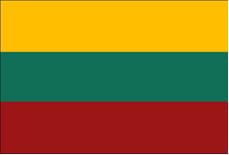The large amount of elements intended for visual communication, such as advertising posters, advertisements, signs, graffiti, billboards, among others, generate visual discomfort for the population. This process is characterized as visual pollution. This type of pollution is more intensely present in large urban centers.
The capitalist economic model, with current production patterns, promotes exacerbated consumption incentives. Advertising advertisements are a way to instigate the population to consumerism. Explicitly carrying out the alienation of the population, with increasingly flashy and attractive advertisements. However, these advertisements around the city act in a harmful way, hiding the original architecture of the city, causing eye strain and even triggering traffic accidents due to the diversion of attention of drivers and pedestrians.

Signs and advertisements that generate visual pollution
The reduction of green areas and the intensification of advertisements, billboards, posters, signs and others elements that cause visual pollution, significantly reduce the quality of life of the urban population. This is due to the discomfort generated by the amount of advertisements and the lack of harmony between them, with a lot of advertisements that modify the characteristics of the cities.
Despite so many inconveniences generated by visual pollution, few steps are taken to solve this problem. One of the reasons is that the population itself often does not realize the damage and aggression caused by this process.
Unlike other types of pollution, such as air, water, soil and noise, which generate more problems noticeable, visual pollution generates disorders, especially psychological, which are often not noticed by the people.
Public Policies must be created with the objective of solving the problem of visual pollution. Some municipalities apply rules that prohibit the excessive amount of advertisements throughout the city, determining which stores and other commercial points adapt their facades in such a way that they provide a pleasant place for the population that transits these spaces.
Do not stop now... There's more after the advertising ;)
_________________
*Image credits: Allen. G / Shutterstock
By Wagner de Cerqueira and Francisco
Graduated in Geography
Brazil School Team
General geography - geography - Brazil School
Would you like to reference this text in a school or academic work? Look:
FRANCISCO, Wagner de Cerqueira e. "Visual pollution "; Brazil School. Available in: https://brasilescola.uol.com.br/geografia/poluicao-visual.htm. Accessed on June 28, 2021.


